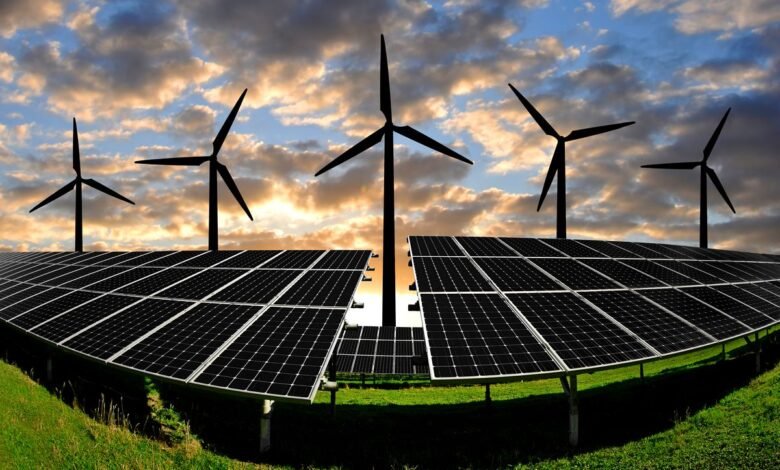Green Energy: A Step-by-Step Guide

Welcome to the world of Green Energy – where sustainability meets innovation, and our planet’s future is brighter than ever. In a time when environmental consciousness is paramount, exploring renewable energy sources has never been more crucial. Let’s dive into this enlightening journey together, discovering why green energy is not just an option but a necessity for a greener tomorrow.
Why We Need Green Energy?
The need for green energy is more pressing than ever before. Traditional energy sources, such as fossil fuels, are finite and harmful to the environment. Burning these fuels releases greenhouse gases into the atmosphere, contributing to climate change and air pollution.
Green energy offers a sustainable alternative that harnesses natural resources like sunlight, wind, and water to generate power without depleting our planet’s resources or polluting our air. By transitioning to green energy sources, we can reduce our reliance on fossil fuels and mitigate the impacts of climate change.
Embracing green energy is crucial for creating a cleaner and healthier future for future generations. It enables us to combat global warming, protect ecosystems, and promote environmental sustainability. Changing towards renewable energy is not just an option; it’s necessary to safeguard our planet and secure a better tomorrow.
Types of Green Energy Sources
Regarding green energy, various sources can be harnessed to reduce our carbon footprint and environmental impact.
Solar power is one of the most popular forms of renewable energy, utilizing sunlight to generate electricity through solar panels. Wind energy is another abundant source of green power, with wind turbines converting kinetic energy into electrical power.
Hydropower involves harnessing the energy from flowing water in rivers or dams to produce electricity. Biomass energy utilizes organic materials like wood chips or agricultural waste to create heat and electricity.
Geothermal energy taps into the Earth’s natural heat by extracting steam and hot water beneath the surface. These green energy sources play a crucial role in diversifying our renewable energy mix for a sustainable future.
How to Implement Green Energy in Your Daily Life?
Implementing green energy in your daily life can be easier than you think. Start by reducing energy consumption at home:
- Switch to LED light bulbs.
- Unplug electronics when not in use.
- Use energy-efficient appliances.
Consider investing in solar panels for your roof or join a community solar project if installing panels is not feasible. Opt for renewable energy options from your utility company whenever possible and support policies that promote clean energy sources.
Reduce water usage by fixing leaks, taking shorter showers, and using a dishwasher only when complete. Choose public transportation, carpooling, biking, or walking instead of driving alone to reduce carbon emissions—plant trees around your property to provide shade and improve air quality.
Small changes in our daily routines can significantly impact the environment over time.
Benefits of Using Green Energy
Green energy offers numerous benefits that go beyond just reducing our carbon footprint. By harnessing renewable sources like solar and wind power, we can significantly decrease our reliance on fossil fuels and lower harmful emissions into the atmosphere.
Switching to green energy can also lead to cost savings in the long run. While initial setup costs may be higher, the operational expenses are generally lower than traditional energy sources. This can result in reduced electricity bills for households and businesses alike.
Furthermore, green energy promotes job creation in manufacturing, installing, and maintaining renewable technologies. This helps stimulate economic growth while building a more sustainable future for future generations.
In addition to environmental and economic advantages, green energy enhances energy security by diversifying our power sources. By tapping into various renewables, we reduce the risks of depending heavily on finite resources.
Embracing green energy benefits the planet and creates a ripple effect of positive outcomes across various aspects of society.
Challenges and Solutions for Adopting Green Energy
Adopting green energy comes with challenges, but solutions always exist to overcome them. One common hurdle is the initial cost of installing renewable energy systems like solar panels or wind turbines. However, many governments offer incentives and rebates to make it more affordable for homeowners and businesses.
Another challenge is the intermittent nature of green energy sources like solar and wind power. To address this, advancements in battery storage technology enable excess energy to be stored during low production periods.
Moreover, the need for infrastructure to distribute green energy can be a barrier. Developing intelligent grids that efficiently transport electricity from renewable sources to consumers is critical.
Education and awareness are also crucial challenges. By promoting the benefits of green energy through campaigns and educational programs, more people can understand its importance and adopt sustainable practices in their daily lives.
Conclusion
As we strive towards a more sustainable future, incorporating green energy into our daily lives is not just an option; it’s a necessity. We can reduce our carbon footprint and combat climate change by harnessing renewable energy sources like solar, wind, and hydro power.
Embracing green energy is a step in the right direction towards creating a cleaner and healthier planet for generations to come. It may present challenges along the way, but with innovation and determination, we can overcome them together.
Let’s consciously adopt green energy practices wherever possible – using solar panels on our rooftops or opting for electric vehicles. Every small effort adds up to create significant positive impacts on the environment.



